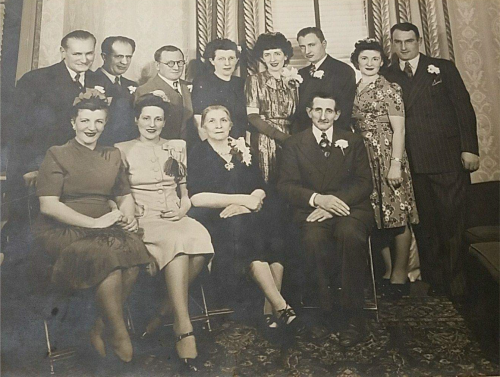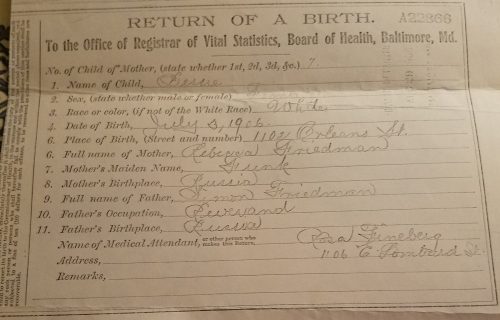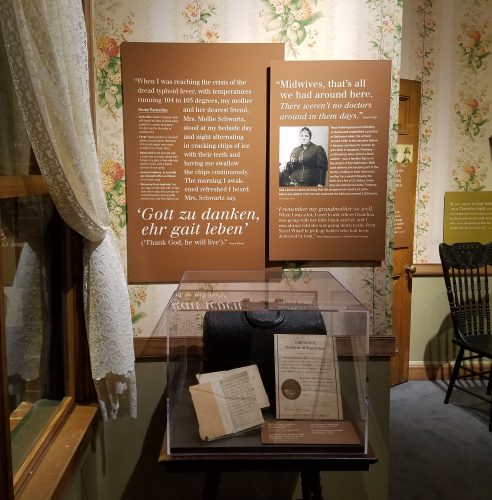Finding my Family’s Roots in Jonestown

A blog post by Museum Educator Marisa Shultz! To read more posts from Marisa, click here.
You may not know this about me, but I am a bit of a genealogy nerd. Whether it’s tracing the branches of my family’s tree back to the docks of Ellis Island and the battlefield of Guilford Court House, or helping a friend learn more about their family’s story, I really enjoy the ‘detective work’ of genealogy. Who would have thought that my sleuthing would lead me here, to Baltimore’s historic Jonestown neighborhood?
In March of 2018, I visited the JMM for the very first time. I had just tracked my great-great-grandfather, Rabbi Simon Friedman, and his family to Jonestown through the census records. In every census record they were renting in a different home but always in or around Jonestown, living on Low, Orleans, Fayette, and Granby Streets during their time in Baltimore. I came here, honestly, hoping to get lucky. I was feeling stymied and stuck in my research, and I was hoping that I might find something on display at the JMM that would push my work forward. While I did not find the Friedmans on any of the panels, I learned a great deal about the world they lived in (and little did I know that my serendipitous trip here would lead me to apply for the Education and Programs Internship position that summer.)
So, I continued to pour over the family photographs and documents, learning more facts about the ancestors I was so desperately trying to connect with. I learned that Rabbi Friedman did not serve as a congregational leader but was a local Hebrew teacher. His two oldest children, Ida and Louis, had been born in Russia. His twin sons, Morris and Phillip were butchers, and Phillip served in the Army during WWII. My great-grandmother and youngest of the family, Bessie, eventually left Baltimore and moved to D.C. after meeting my great-grandfather.

Recently, however, I made an incredible discovery that I had to share with all of you. As I was looking at a copy of my great-grandmother’s birth certificate, I noticed something that I had never bothered to notice before, the name of the midwife who delivered my great-grandmother. Rosa Fineberg. Her name might sound familiar to you. That’s because she’s featured in our Voices of Lombard Street exhibit.

Fineberg served as a midwife in Jonestown between 1890 and 1918. As the Voices exhibit explains “Every time she delivered a baby, Fineberg tied a knot in a piece of string that she wrapped into a ball as it grew. Before she died in 1926, her son unwound the ball and counted 2,000 knots.” My great-grandmother was one of those knots! In a way, the Friedmans were in the exhibit, just not where I was looking for them! While I still have so much to learn about this part of my family, this story in particular helped me realize that I am both living and working where part of my family put down its first roots in America. It makes me misty-eyed just thinking about it.

I think the other thing that I love so much about genealogical research is that it so often forges a deeply personal connection with history. I’ve been thinking a lot lately about how heirlooms, family stories, photographs, and even documents can not only help us understand the past, but also profoundly connect us to the past. I’ve been working on a very exciting project that will add to our current Ida Rehr Living History Character performance. I don’t want to spoil too much about the project now because you’ll get to learn more about it in our next month’s Performance Counts newsletter. However, I will share that Ida Rehr’s story was saved because her granddaughter interviewed her for a school project, and this new project will challenge students to think about how material culture (heirlooms, documents, etc.) can help tell their families’ stories and even their own personal stories.
